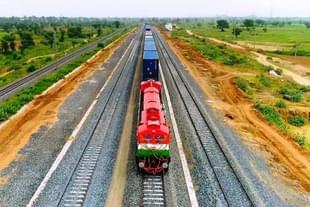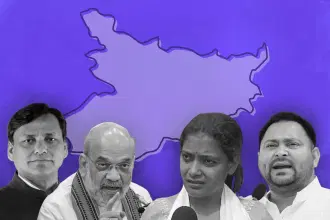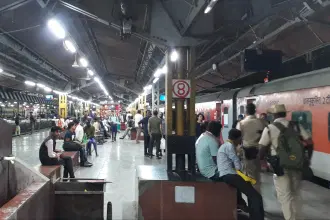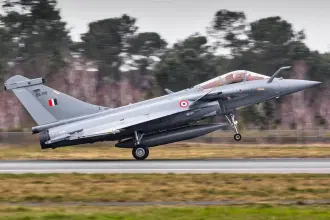Infrastructure
Dedicated Freight Corridors Help Save Billions; Bring Down Logistics Costs To 8–9 Per Cent Of GDP
Swarajya Staff
Nov 05, 2025, 10:36 AM | Updated 10:36 AM IST
Save & read from anywhere!
Bookmark stories for easy access on any device or the Swarajya app.


India’s logistics costs have fallen sharply from 14 per cent to about 8–9 per cent of GDP, according to the Dedicated Freight Corridor Corporation of India Limited (DFCCIL).
The state-run company attributed the decline to the commissioning of dedicated freight corridors (DFCs). A recent DPIIT–NCAER has also underscored the growing cost advantage of rail-based freight.
Railways remain the cheapest mode of goods transport in India, with an average cost of Rs 1.96 per kilometre, significantly lower than road (Rs 3.78), waterways (Rs 2.30), and air (Rs 72).
The reduction in logistics costs is expected to deepen further as the Western Dedicated Freight Corridor (WDFC) nears completion. DFCCIL recently conducted a trial run between Vaitarna and Kharbao, a 37-kilometre section, leaving only 67 kilometres of track to be finished before the WDFC becomes fully operational.
“Within the next two months, we will commission the remaining section, marking the completion of a project that began nearly two decades ago,” a DFCCIL official said.
Currently, about 96.4 per cent of the total 2,843-kilometre DFC network has been commissioned. The Eastern DFC (1,337 km) is fully operational, while the Western DFC (1,506 km) has reached 93.2 per cent completion.
Once the WDFC connects to the Jawaharlal Nehru Port Trust (JNPT), DFCCIL expects freight traffic to rise sharply, with the number of trains increasing from around 386 per day to nearly 440. The average speed of freight rakes is also projected to climb from 50–60 kmph to about 75 kmph.
In FY25, DFCCIL recorded over 2,002 billion gross tonne kilometres (GTKM) and 115 billion net tonne kilometres (NTKM), reflecting steady growth in productivity.
Despite covering just 4 per cent of India’s total rail network, the corporation now handles more than 13.4 per cent of the country’s overall railway freight traffic.





